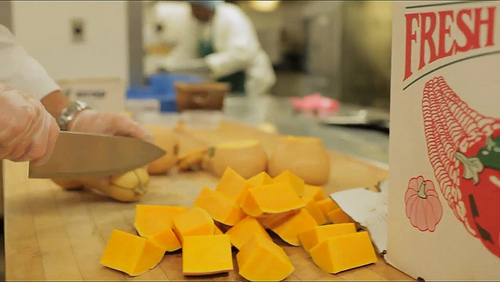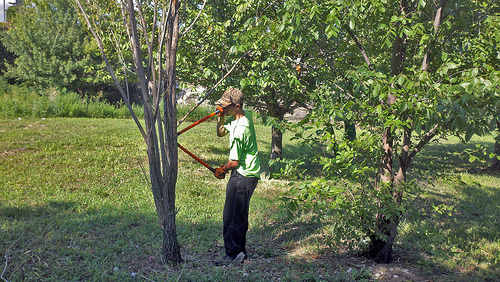By Liz Purchia, Press Assistant
A crowd of all ages gathered in the Jefferson College Field House this morning for the Obama administration’s National Rural Summit. The audience listened as Agriculture Secretary Tom Vilsack, along with several other esteemed panelists, took the stage to discuss the silent crisis facing rural America today. On a beautiful June day, more than 400 people listened intently as industry and community leaders outlined a roadmap for revitalization in rural communities.
Secretary Vilsack started out the day reminding everyone in attendance – and those watching on the webcast across the nation – that ranchers, farmers, and residents of rural America play a crucial role in the prosperity of our nation as a whole. The contributions that rural Americans make to every family in this country are far-reaching. One in every 12 jobs in the nation is created by agriculture. Americans from every town and city rely on the strong system of values rooted in rural communities. And although rural America is home to about 20 percent of nation’s population, more than 45 percent of America’s service men and women were raised in rural America.
However, it is no secret that these small towns are in need of revitalization. In the last five years, we have lost 40,000 medium-sized farming operations. Rural Americans earn less than their urban counterparts, rural populations are declining and aging, and fewer folks are earning advanced degrees. Secretary Vilsack outlined the five pillars that make up the framework for a new rural economy. He joined audience members and panelists to discuss the ways in which these strategies will positively affect those living, working and raising families in rural communities.
One audience member said it is the ability to adapt and change that brings promise to rural communities. Those sentiments were echoed among the group. Darrin Inhen, president of the National Corn Growers Association, suggested that ethanol offers growth opportunities to expand the role of agriculture in America’s energy independence. James Young, Mayor of Philadelphia, Mississippi, said bringing high-speed internet access to rural towns is vital to allow a direct line of communication with the rest of the world.
John Redding, former president of the National Association of Conservation Districts, reminded everyone that rural communities must flourish to protect the environmental future of our country. Looking to his granddaughter Lucy to illustrate the importance of a strong rural economy, Redding said, “I do what I do because of my Lucy. You do what you do because of your Lucy. That’s what’s at stake here.”
Secretary Vilsack affectionately dubbed rural communities the soul of America, vital to the successes of our nation as a whole, and as James Young said: “Quitting is not an option. Giving up is not an option. Stopping is not an option. People in rural communities know this. We are going to continue to grow, because it is in us to grow.”
Summit participants had the opportunity to further discuss the ideas touched on briefly during the morning session throughout the afternoon in six different breakout sessions. The six tracks the attendees got to explore were:
•Building Infrastructure for a 21st Century Rural Economy
•Expanding Opportunities for Rural Businesses
•Renewable Energy and Biofuels
•Farm Competitiveness and Productivity
•Forest Restoration
•Rural Recreation and Private Land Conservation
•Regional Food Systems and Nutrition.
The conversation was productive and wide ranging. But everyone assembled reaffirmed the promise they see in rural America, and expressed hope at the Obama administration’s commitment to building a more prosperous future for rural communities.
Check back for the National Summit wrap-up later today as the attendees and panelists finish the discussion for rural America’s revitalization.


